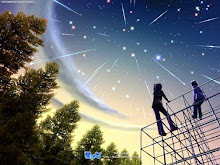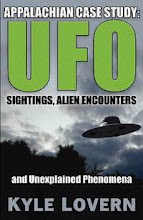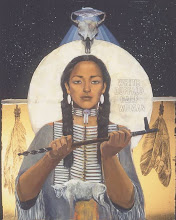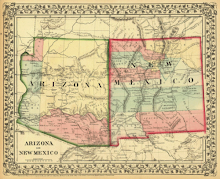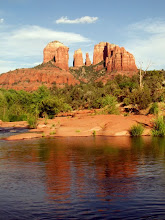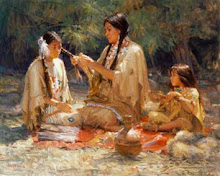Sunday, September 22, 2019
New films, TV series, books tell stories of ‘Ohiyo’ River Appalachian mountain region
By Steve Hammons
In different ways, via different media platforms and with different stories to tell, five recent and significant media projects explore the southern Appalachian mountain area including the Ohio River region abutting Ohio, Kentucky and West Virginia.
“Country Music” – The recently-broadcast Ken Burns documentary “Country Music” on PBS is filled with Bluegrass and “old-time” mountain music, and stories about the history and people of the southern Appalachian region.
“Dark Waters” – The first movie trailer has been released for “Dark Waters” starring Mark Ruffalo and Anne Hathaway. The film is based on the true story of a Cincinnati attorney investigating reports of streams and waterways poisoned by toxic chemicals in nearby Parkersburg, West Virginia.
“The Pioneers” – Historian David McCullough’s recently-published best-selling book “The Pioneers” explores the history of that same area of southeastern Ohio abutting the Ohio River and West Virginia, particularly in the era of the 1700s.
“Hillbilly Elegy” – The controversial, best-selling book “Hillbilly Elegy” is about the growing-up years of author J.D. Vance in a small town between Cincinnati and Dayton. The migration of Kentuckians and Appalachians into the southwest Ohio area is a key part of his story. Ron Howard’s Imagine Entertainment has been filming the movie version for Netflix.
“Project Blue Book” – Dayton is also the setting for Season 2 of the A&E History Channel series “Project Blue Book.” The real Project Blue Book operated from Wright-Patterson Air Force Base in Dayton while investigating UFO reports in the ‘50s and ’60s.
BEAUTIFUL LANDS OF THE “OHIYO”
Back in the 1700s, "the Ohio country” was an attractive piece of real estate for the French, British and the government of a newly-formed alliance of former colonies called the United States of America.
The Shawnee, Cherokee and others who had lived in the area for tens of thousands of years also apparently liked the region.
Who can blame them? Pure and pristine creeks, streams, rivers and waterways flowed through lush forests covering the hills, mountains and valleys, eventually flowing into the vast river called the "Ohi yo" or ”Ohiyo.”
There was fishing, hunting, and plots of corn, beans and squash ("the three sisters"). Nuts, berries, edible wild plants and roots (including medicinal plants) were literally there for the picking. The land and forests provided plenty of building materials for permanent homes, villages and towns. Canoes provided transportation on the many waterways.
And like today, fairly harsh and dreary winters always finally gave way to beautiful spring seasons bursting with life, followed by warm summers and the spectacular autumn color show when the forest leaves covering the hills and mountains turn to bright red, orange and gold.
When Anglo, Scottish, Scots-Irish and other colonial explorers and settlers began interfacing with the people of the eastern slopes of the southern Appalachian mountain range (the Cherokee in many cases) there was a significant scope of friendly contact.
Before long, prior to and after the American Revolution, traditional Scottish and Scots-Irish tunes like those in “Country Music” would be echoing through those hills and mountains in Cherokee country, around campfires and in frontier cabins and communities.
As we know, as the 1700s progressed, so did the western expansion and migration of colonists and new “Americans” seeking land and a better way of life. They moved steadily deeper into the southern Appalachian mountain range, and eventually to the western slope of the range in Ohio, Kentucky and Tennessee.
After the American Revolution, as McCullough explains in “The Pioneers,” the new government passed the Northwest Ordinance of 1787. It basically claimed the “Northwest Territory” for the U.S. government -- what are now Ohio, Indiana, Michigan, Illinois, Wisconsin and part of Minnesota – and promptly started selling off large land parcels to investors and others. This also raised much-needed money for the new federal government. These lands had previously been claimed by the French and British.
FULL CIRCLE
Now, many generations later, more recent stories of the region are also informing us. And some current narratives seem to dovetail with important developments and interesting elements of the area’s deeper history.
The A&E History Channel series “Project Blue Book” essentially covers the period when the project was active at Wright-Patterson AFB from Dayton, 1952-1970. But the overall topic of what’s now being called “unidentified aerial phenomena (UAP)” reportedly might stretch back to WWII, earlier, or even much, much earlier.
Very recent reports and developments coming from the U.S. Navy on this subject seem worth noting, and might give us more insight about Project Blue Book activities.
Ohio itself and surrounding states have been areas where people have reported "UAP." Some of these reports have reportedly been credible and came from military personnel and public safety peace officers.
The book and movie “Hillbilly Elegy” tell a story of a generation or so later. The author was born in 1984 and spent his youth in a small town just south of Dayton in the ‘80s and ‘90s.
His family had roots in Kentucky and Appalachia, like many people of southern and southwest Ohio. Director Ron Howard and the cast and crew filmed for four days in the author’s hometown of Middletown.
And now the new movie “Dark Waters” will look at that same Ohio River region circa 1998 when reports of a farmer’s dead cows in the Parkersburg, WV, area led to the discovery of toxic chemicals in the waterways there.
Interestingly, part of the filming was done just south of Middletown in the town of Hamilton (sometimes known as “Hamiltucky”). And Parkersburg is just 13 miles downriver from Marietta, the town of McCullough's pioneers and 38 miles from Ohio University in Athens, founded by those same pioneers.
Mark Ruffalo plays the role of the real-life Cincinnati corporate attorney who took legal actions on behalf of the local people affected by the poisonings.
That might bring us around full circle to the deeper history of the confluence of the states of Ohio, Kentucky and West Virginia and surrounding areas, contrasting the “Dark Waters” case and our modern society with days long, long ago.
As we might remember, there once was a time when pure and pristine creeks, streams, rivers and waterways flowed through lush forests covering the hills, mountains and valleys, eventually flowing into the vast river called the "Ohi yo" or ”Ohiyo.”
(Related article “Storytelling affects human biology, beliefs, behavior” is posted on the CultureReady blog, Defense Language and National Security Education Office, Office of the Undersecretary of Defense for Personnel and Readiness, U.S. Department of Defense.)































